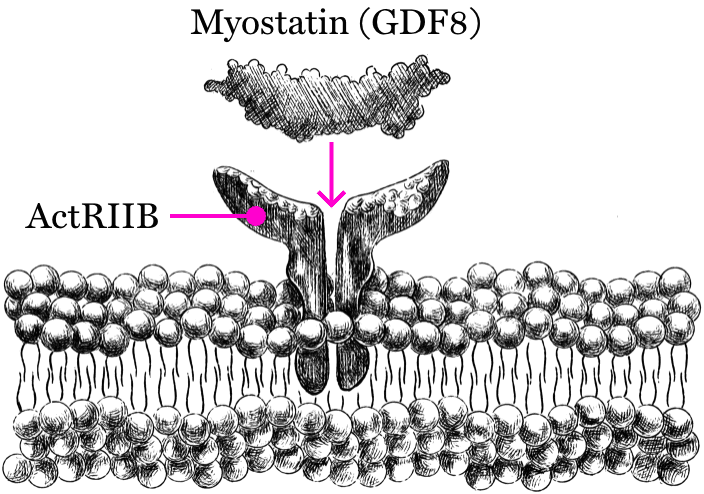Striving for more than surviving
Lyza, 23
Living with SMA
On an approved SMN-targeted treatment for 8 years
The rising bar of treatment goals
As the research into SMA continues to expand, so do the community’s treatment goals. With the success of current treatment options and multidisciplinary therapy routines, people are reframing their targets; in lieu of traditional measures of motor function, their focus is on sustaining and gaining muscle strength, reducing fatigue, and improving their ability to perform activities of daily living.2,8,10,60
In a Cure SMA Survey of more than 300 community members, gaining muscle strength was the primary unmet need.46
gaining muscle strength
Data derived from the 2024 Cure SMA Community Update Survey, an annual online survey (n=311).46
This is the kind of shift the SMA community is counting on: a focus on improved muscle function, increased independence, and helping people maximize outcomes that can elevate their quality of life.3,47
A shift in research and treatment goals in SMA
A recent study of 15 patients treated with nusinersen examined muscle strength in 72 muscles across a variety of different muscle groups, which showed a broad range of weakness. Although some muscle groups showed more significant improvement, overall improvement in muscle strength was modest (2%) and largely transitory, highlighting the unmet needs in this patient population.61
Myostatin: a potential target in SMA
Myostatin is a naturally occurring protein that inhibits muscle growth. It’s a member of the transforming growth factor beta (TGF-β) superfamily and exists primarily in skeletal muscle. Inhibiting myostatin signaling can shift the balance from muscle breakdown to muscle growth.61,63,64

A new target in the muscle
The Belgian Blue breed of cattle has a natural mutation in the myostatin gene. This impairs myostatin signaling, leading to unchecked muscle growth.63
The potential for myostatin as a target of neuromuscular disease therapies became apparent after myostatin gene knockout studies. In mice whose myostatin gene was deleted, muscle mass increased—a finding that has been replicated in many species.64
Is myostatin inhibition a viable strategy for neuromuscular diseases in humans?
More than two decades of preclinical and clinical research has revealed successes and challenges.64,65
The role of myostatin in muscle growth
Normal muscle growth and function depend on a checks and balances system.
The muscle fine-tunes its metabolism to meet the demands of its environment. When stressed, the muscle responds by increasing protein production to support muscle growth (anabolism). When not stressed, the muscle reduces protein production and puts the brake on growth (catabolism). This balance between anabolic and catabolic pathways is mediated by many proteins, one of which—myostatin—can potentially be leveraged in neuromuscular disease, including SMA.64,66

Myostatin is expressed primarily in skeletal muscle in an inactive form and is enzymatically activated to reduce protein synthesis when needed to balance muscle growth.64
Given the role of muscle in maintaining a functioning motor unit, it is logical to explore targeting both the muscle and the motor neuron.8
Known challenges of inhibiting myostatin
Because of the clear rationale for targeting myostatin in neuromuscular diseases, it has been a robust area of research for over two decades. Historically, there have been challenges in exploiting myostatin inhibition. These challenges are twofold: several other members of the TGF-β superfamily have a high degree of sequence homology with myostatin, and the receptors myostatin signals through are shared by other growth factors as well.67,68
To advance the potential of myostatin inhibition, new strategies that selectively inhibit the myostatin pathway without affecting other pathways may need to be considered.8,60
VOICE OF THE CLINICIAN
“Since the discovery of myostatin as a critical regulator of skeletal muscle mass, research has focused on the understanding of its molecular and cellular modulators. The long-term goal is the development of treatment strategies that could block myostatin signaling to counteract muscle atrophy.”60
—Abati et al., Cellular and Molecular Life Sciences, 2022.
The opportunity of myostatin inhibition
Targeting only myostatin may be important to overcome known challenges with myostatin inhibition. To further advance the potential of myostatin inhibition, new strategies now are looking at selectively inhibiting the myostatin pathway while minimizing effects on other pathways.8,65

Jeybriel, 3
Living with SMA
On an approved SMN-targeted treatment for 1 year
The Life Takes Muscle Podcast
Join leading SMA expert Dr Diana Castro and her guests as they explore topics like the unmet need of addressing progressive muscle weakness, the untapped potential of people living with SMA, and the role of myostatin as an inhibitor of muscle growth.
Join the Life Takes Muscle MOVEMENT
Sign up to stay up to date—and to join your peers in shaping SMA’s evolving landscape.

